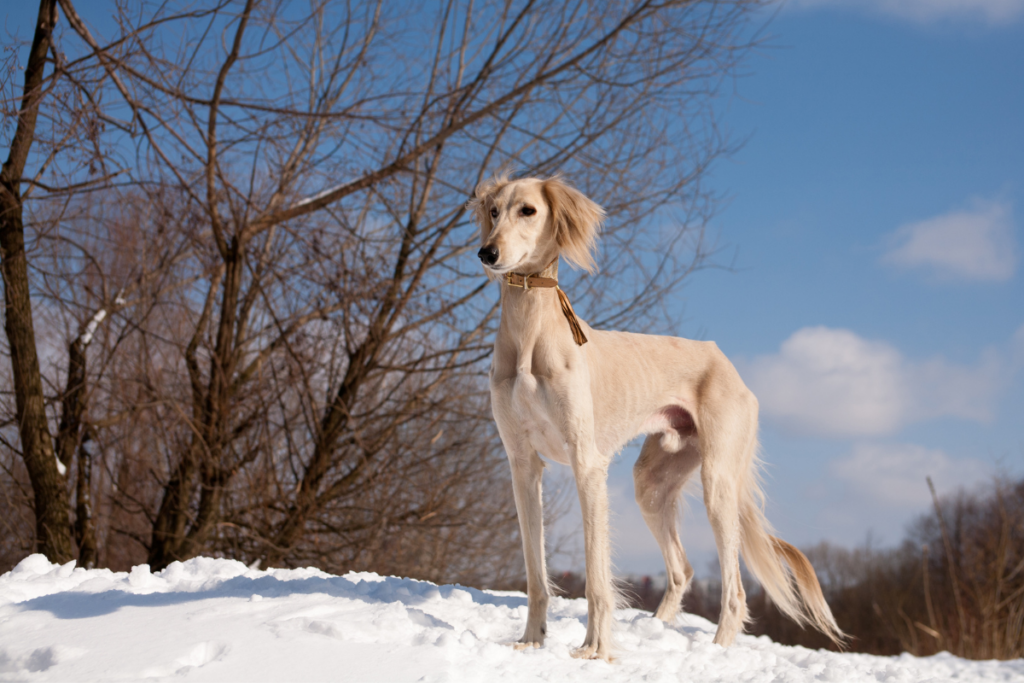Dogs have been our loyal companions for thousands of years, serving as hunters, herders, protectors, and friends.
Among the many breeds, some stand out for their remarkable speed.
These canine speedsters possess a unique combination of physical traits, instincts, and training that allow them to excel in activities requiring rapid movement.
This article delves into the fastest dog breeds, exploring what makes them so quick and highlighting their history, characteristics, and roles in the human world.
The Need for Speed: Why Speed Matters in Dogs
Speed in dogs has historically been crucial for various practical purposes.
In hunting, a fast dog can chase down prey, allowing hunters to catch food more efficiently.
Herding breeds need speed to keep up with and control livestock.
In modern times, speed is also valued in dog sports and competitions, where swift breeds excel in events like racing and agility trials.
The speed of a dog is influenced by several factors:
Muscular Structure: Fast dogs have well-developed muscles, especially in their legs and hips, allowing for powerful and swift movements.
Aerodynamic Build: Many of the fastest breeds have streamlined bodies, long legs, and deep chests, which reduce air resistance and enhance their running efficiency.
Instincts and Drive: Many fast breeds have a natural prey drive or herding instinct that propels them to run quickly.
Training and Conditioning: Proper training and conditioning can enhance a dog’s natural speed, ensuring they maintain peak physical performance.

Top Fastest Dog Breeds
1. Greyhound

The Greyhound is often celebrated as the fastest dog breed, capable of reaching speeds up to 45 miles per hour (mph).
Originally bred for hunting game such as deer and hare, Greyhounds have been a part of human culture for thousands of years, with ancient depictions found in Egyptian tombs and Roman art.
Characteristics:
Build: Greyhounds have long, slender bodies, narrow heads, and deep chests.
Temperament: Despite their speed, Greyhounds are known for their gentle and calm demeanor.
They are often referred to as “40 mph couch potatoes” due to their love of lounging around when not running.
Role: In modern times, Greyhounds are primarily used in racing and as pets.
Retired racing Greyhounds often make excellent companions.
2. Saluki

The Saluki, also known as the Persian Greyhound, is another ancient breed known for its incredible speed, reaching up to 42 mph.
Salukis were bred by nomadic tribes in the Middle East to hunt gazelles and other fast prey.
Characteristics:
Build: Salukis have a lean, elegant body, with long legs and a narrow frame.
Temperament: They are independent, gentle, and affectionate with their families.
Role: Salukis are still used for hunting in some parts of the world but are also popular as show dogs and pets.
3. Afghan Hound

With a top speed of around 40 mph, the Afghan Hound is both a speed demon and a symbol of elegance.
Originating in the mountainous regions of Afghanistan, this breed was used to chase down game over rough terrain.
Characteristics:
Build: Afghan Hounds have a tall, lean build with long, flowing coats that add to their regal appearance.
Temperament: They are known for being aloof yet affectionate with their owners.
Role: Afghan Hounds are prized in the show ring for their beauty and grace but also excel in lure coursing.
4. Whippet

Often referred to as the “poor man’s Greyhound,” Whippets can reach speeds up to 35 mph.
They were originally bred for hunting small game and later became popular in dog racing.
Characteristics:
Build: Whippets have a streamlined body similar to the Greyhound but on a smaller scale.
Temperament: They are friendly, affectionate, and enjoy cuddling when not in motion.
Role: Whippets excel in racing and agility competitions and are wonderful family pets.
5. Vizsla
The Vizsla, a Hungarian breed, can run at speeds of up to 40 mph.
They were bred for hunting and retrieving game and are known for their endurance and speed.
Characteristics:
Build: Vizslas have a lean, muscular build with a short, rust-colored coat.
Temperament: They are energetic, affectionate, and require plenty of exercise.
Role: Vizslas are excellent hunting companions and do well in dog sports.
6. Dalmatian
Dalmatians, famous for their distinctive spotted coats, can run up to 37 mph.
Historically, they were used as carriage dogs, running alongside horse-drawn carriages to protect the occupants and clear the way.
Characteristics:
Build: Dalmatians have a strong, athletic build.
Temperament: They are energetic, intelligent, and can be quite independent.
Role: Dalmatians are popular pets and excel in activities requiring stamina and speed.
7. Borzoi
The Borzoi, or Russian Wolfhound, can reach speeds of 36 mph.
They were bred by Russian aristocracy for hunting wolves and other large game.
Characteristics:
Build: Borzois have a slender, graceful build with a long, silky coat.
Temperament: They are gentle, calm, and somewhat reserved.
Role: Borzois are still used for hunting in some regions and are also valued as show dogs and pets.
Factors Influencing Canine Speed
Several factors contribute to the exceptional speed of these breeds:
Physiology: The physical structure of fast dogs includes long legs, a deep chest for lung capacity, and a flexible spine, allowing for an extended stride.
Genetics: Breeding plays a significant role in developing and maintaining speed in these breeds.
Selective breeding for hunting, racing, and herding has honed their speed and agility.
Training: While genetics set the potential for speed, training and conditioning maximize it.
Regular exercise, proper nutrition, and specific training routines help these dogs reach their top speeds.
Inherent Drive: Many of these breeds have a high prey drive or herding instinct, which naturally motivates them to run fast.
This drive, combined with their physical capabilities, makes them formidable speedsters.
Modern Roles and Popularity
Fast dog breeds continue to play significant roles in contemporary society.
While their historical roles in hunting and herding may have diminished, their speed and agility find new outlets in modern activities:
Dog Racing: Greyhounds and Whippets are famous for racing.
These events attract enthusiasts who admire the dogs’ speed and competitive spirit.
Agility Competitions: Many of these breeds excel in agility trials, showcasing their speed, intelligence, and athleticism through obstacle courses.
Lure Coursing: This sport mimics hunting, with dogs chasing a mechanical lure.
Breeds like Afghan Hounds and Borzois excel in these competitions.
Companion Animals: Despite their high energy levels, many of these breeds make excellent pets.
Their loyalty, affection, and often gentle nature endear them to families.
Therapy and Service Dogs: Some of these breeds, like the Vizsla, are used as therapy and service dogs due to their intelligence, trainability, and affectionate nature.
Caring for High-Speed Breeds
Owning a fast dog breed comes with specific responsibilities.
These dogs require plenty of exercise, mental stimulation, and proper care to ensure they remain healthy and happy.
Exercise: These breeds need regular, vigorous exercise.
Activities like running, fetch, agility training, and lure coursing can help meet their exercise needs.
Diet: A balanced diet rich in protein and nutrients is essential to support their high energy levels and maintain muscle mass.
Training: Consistent training from an early age helps manage their energy and ensures they are well-behaved. Positive reinforcement techniques work best.
Health Care: Regular veterinary check-ups, vaccinations, and preventive care are crucial.
Monitoring for breed-specific health issues, such as hip dysplasia in Greyhounds or heart conditions in Whippets, is important.
- Mental Stimulation: These intelligent breeds need mental stimulation to prevent boredom.
- Puzzle toys, training exercises, and interactive play can help keep their minds sharp.
Conclusion
The fastest dog breeds are remarkable not only for their speed but also for their rich histories, diverse roles, and unique characteristics.
From the elegant Greyhound to the energetic Vizsla, these speed demons of the canine world continue to captivate our hearts and minds.
Whether racing on the track, herding livestock, or lounging on the couch after a brisk run, these dogs exemplify the perfect blend of athleticism, loyalty, and companionship.
Owning one of these breeds is a rewarding experience, offering a glimpse into the extraordinary world of canine speed and agility.







